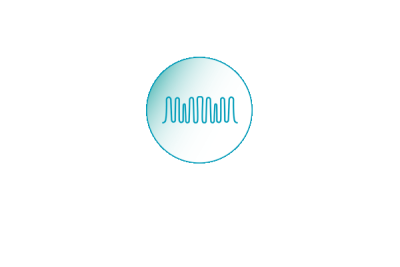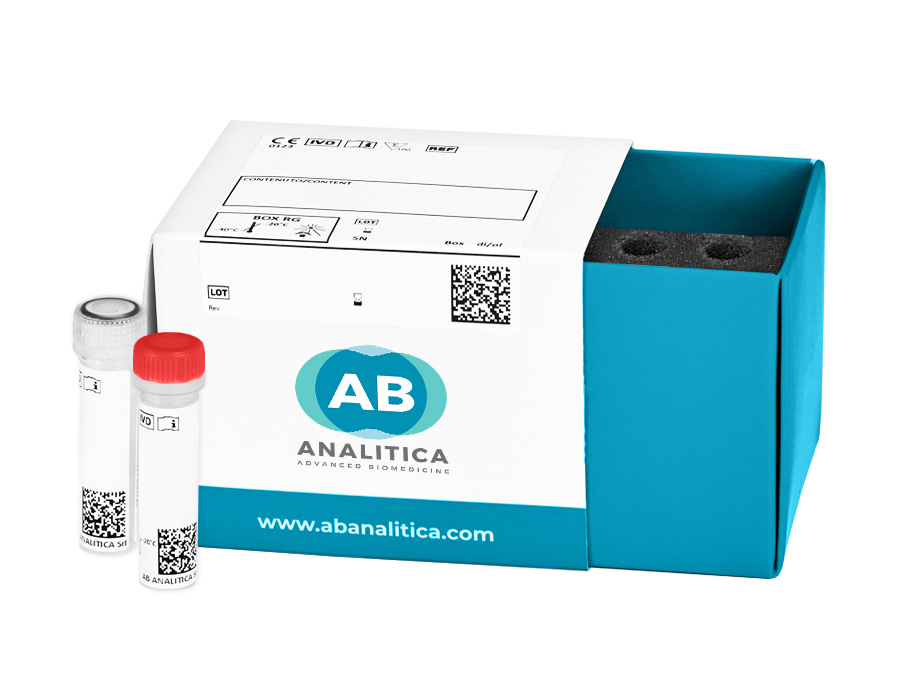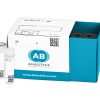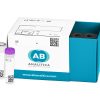Description
REALQUALITY RQ-PAI-1 4G/5G is an IVD for detection and genotyping of the -675 4G/5G polymorphism in the human gene coding for the plasminogen activator type-1 inhibitor by Real-Time PCR.
Product Characteristics
- The assay requires only 1 µL of DNA extracted
- Compatible with the most common Real-Time PCR instruments
- It is equipped with a dUTP/UNG system for the prevention of carry-over contamination and a fluorescence normalizer
- The automatic format of the assay can be used on GENEQUALITY® automatic platforms
- It includes an automatic interpretation of results with AB SNP Report software
Kit content
Kit content:
- Ready-to-use reagents for Real-Time PCR
- Homozygous (5G/5G and 4G/4G) and heterozygous (5G/4G) positive controls
Further Information
Thrombophilia is commonly defined as any acquired or hereditary disorder associated with an increased risk to develop thromboembolic phenomena. These phenomena occur when blood circulation is blocked by clots, originating in veins or derived from a thrombus in another area of the body. Thrombosis that is not the result of a genetic defect often occurs in elderly persons as a consequence of strong environmental risks factors. In contrast, hereditary thrombosis is associated with an onset at earlier age.
Genetic alterations of different blood components may directly or indirectly influence blood homeostasis, thus triggering a prothrombotic state.
The fibrinolytic system is the antagonist of the coagulation system, and, under conditions of normal blood flow, is in equilibrium with the coagulation system. The main factor is plasmin, which is released as an inactive zymogen called plasminogen and is converted into its active form (plasmin) by a variety of enzymes, including the tissue type (t-PA) and urokinase type (u-PA) plasminogen activator.
PAI-1 is a member of the Serpin enzyme family and inhibits activation of the tissue plasminogen activator (tPA), thus reducing fibrinolysis. In the circulatory system, PAI-1 is in molar excess compared to tPA. The balance between PAI-1 and tPA is crucial for preventing systemic fibrinolysis while still allowing local clot formation on one hand and avoiding systemic bleeding on the other hand. In addition, PAI-1 appears to also play an important role in stabilizing fibrin and in vascular remodelling. High levels of the plasminogen activator inhibitor 1 have been associated with an increased risk of both arterial thrombosis (myocardial infarction and coronary artery disease) and venous thrombosis (thromboembolism). Particularly, smokers or persons who suffer from hypertension levels are prone to develop these conditions.
The gene coding for PAI-1 is located in the q22.1 locus on chromosome 7. A well-known SNP (single nucleotide polymorphism) in the gene is defined by the insertion/deletion of a single G (5G and 4G allele) in the promoter region of the gene (position -675). About 26% of the general population are homozygous for the 4G allele (4G/4G genotype), 24% are homozygous for the 5G allele (5G/5G genotype) and 50% are heterozygous (4G/5G genotype). The 4G allele shows increased transcriptional activity, leading to increased PAI-1 plasma levels, and has found to be associated with an increased thrombotic risk. Subjects that are homozygous for the 4G allele show by 25% higher PAI-1 plasma levels than 5G-homozygous persons.
Ordering Information
| Code | Product | PKG |
|---|---|---|
| RQ-119-4M | REALQUALITY RQ-PAI-1 4G/5G | 50 tests |
| RQ-119-6M | REALQUALITY RQ-PAI-1 4G/5G | 100 tests |
| RQ-119-4A | REALQUALITY RQ-PAI-1 4G/5G - Automatic format | 50 tests |
| RQ-119-6A | REALQUALITY RQ-PAI-1 4G/5G - Automatic format | 100 tests |









